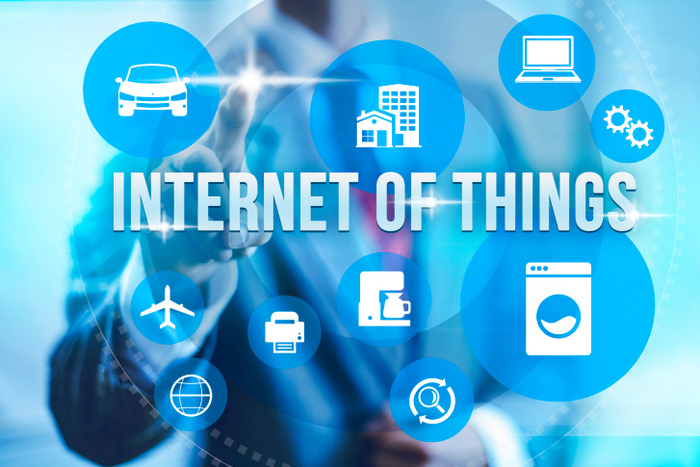The Industrial Internet of Things, or IIoT, refers to the interconnectivity of multiple devices that can communicate with one another without the need for human intervention. IIoT is the industrial offshoot of IoT (the Internet of things) which applied to interconnected systems in other fields outside of manufacturing. This boost in interconnectedness is now possible because of the ready availability of low-cost sensors that can easily be connected up to wireless networks across which a large range of devices can share data and communicate with each other. This gives machines an unprecedented level of digital intelligence. Multiple aspects of a factory’s production and activities can be monitored and tracked and all of this data can be collected and analyzed to help managers and leaders work out how to make business processes more efficient.
IoT and IIot seems to be the way of the future with worldwide spending on the Internet of Things (IoT) forecast to reach $745 billion in 2019 – and likely to hit $1 trillion in 2022.
From Past to Present
We currently stand in what is considered to be the fourth industrial revolution – otherwise known as Industry 4.0. Every decade since the dawn of technologization has brought along with it improvements in production efficiency but this latest revolution is widely considered to be the most disruptive in industrial automation history. The sheer pace of change and the size of the technological leaps are so large that it is hard to get our heads around the scope of these changes.
Cast your mind back, if you can still remember, to the era before smartphones, mobile computers, and the internet. Communication with people across the world was so much harder and slower. The machines that ran our factories could not talk to one another or respond to each other. Yes, technologization made production faster than when we relied solely on manual labor but without intercommunication between machines, we were missing out on some of the huge benefits that are possible today. In the same way that the internet, smartphones and general improvements in technology have broken down barriers allowing us humans to easily and quickly communicate with people all over the world, IIot is breaking broken down barriers between machines and systems and making factories work at a much faster pace.
IIoT in practice
Through IIoT, businesses can harvest detailed, real-time data that helps them understand their business processes better. By analyzing the data coming from sensors, they can work out how to improve every aspect of their business functioning. IIoT can also give businesses insight into the broader supply chain, allowing them to create further efficiencies. IIoT is still in its early stages but with the volume of investment in the industry, we expect to see things evolve rapidly.
Here are some areas in which change is expected:
IIoT and 5G
As networks get better and faster (enter 5G) so will the possibilities of IIoT. IIoT sensors can be anything from cameras to thermometers or motion sensors, depending on the usage. All these sensors will create vast amounts of real-time data, which will need to be analyzed much faster in order to make swift decisions that IIoT advocates claim will boost business efficiency. Gartner forecasts that there will be 14.2 billion connected machines in use in 2019. This staggering number will grow to 25 billion by 2021. All these sensors will produce immense volumes of data – including video, still images, speech, network traffic activity, and sensor data – which will rely on faster networks for transmission.
IIoT and Cloud Computing
Most IIoT applications will involve cloud computing in some form – for both data storage and as a platform upon which to perform big data analytics. Cloud computing vendors are getting more competitive in offering solutions that will serve these evolving trends. One focus is on offering services that stretch from data centers to the edge of the network — this is called edge computing. In practice, this will improve the speed of data processing as data analysis will be carried out on or near the IoT device rather than at a distant cloud data center. By reducing the distance the data has to travel, companies can process data even faster leading to faster business gains.
IIoT and security
IIoT brings with it new security risks because cloud networking exposes data to security risks. Data that used to standalone on factory servers will now be vulnerable to online hackers could try and intercept the data that is being transmitted, or even attempt to gain control of the devices. As IIoT technologies become more mainstream, associated network security features will be required to minimize and estimate the risk of a cyber attack. Unsurprisingly spending on IoT security is increasing at a significant pace according to research carried out by Gartner.
What’s The future of IIoT?
IIoT has massive potential to revolutionize and automate businesses in every sphere. Still in its infancy, there are many areas for growth and improvement but watch this space! Trillions of dollars of investment mean that these changes are likely to come faster than you think and certainly quicker than the changes brought on by the earlier industrial revolutions. As sensors get smaller and cheaper, and 5G networks become more pervasive, the pace of adoption of IIoT will escalate. Keep your finger on the pulse. Even if now is not the time for your factory to invest in IIoT, it might be very soon!


